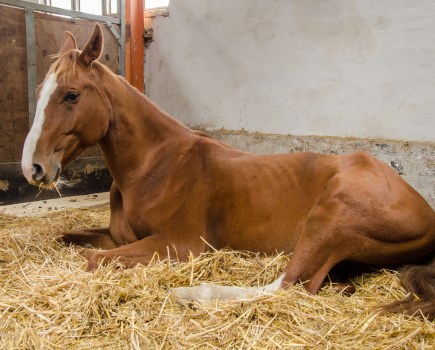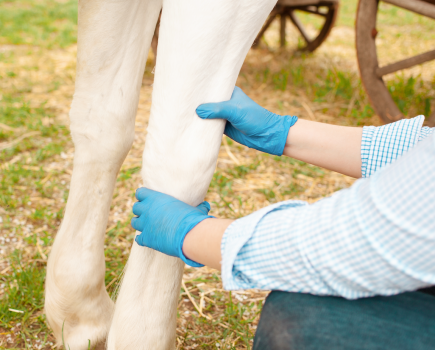Alistair Todd from Kernow Farm and Equine Vets, a member of XLVets Equine, tells us about Karsten a rather unlucky driving horse
A few weeks ago, I was called out to see Karsten for a lameness problem.
When I arrived at the yard, Karsten’s farrier, Danny Smith, happened to be there too. As we’ll find out this happened to be very fortunate. Karsten’s owner, Steph, told me Karsten ‘wasn’t quite right’, and with hindsight, the lameness might have been coming on for a few months.
 Karsten is a working horse, attending wedding and events. Steph mentioned that infrequently he would skip when driving and was intermittently lame, but not bad enough to call the vet.
Karsten is a working horse, attending wedding and events. Steph mentioned that infrequently he would skip when driving and was intermittently lame, but not bad enough to call the vet.
When he went lame again, she thought it was time to get to the bottom of the problem.
I examined him in the stable checking for any lumps, bumps or subtle clues but couldn’t find anything. We then walked, trotted and flexed him up – nothing again.
Sometimes we’ll lunge horses on hard and soft surfaces to make subtle lamenesses more obvious. We tried in the yard and field, but still nothing.
Karsten was sound and making it very difficult to get to the bottom of what was going on. Just as I was about to say we’ll come back another day when he’s lame, Danny mentioned he’d noticed something when he was shoeing Karsten.
He’d seen a distortion in the white line and thought it may have been an early sign of a keratoma. Danny took off the shoe and we both had a look. I agreed it did have an unusual appearance. We decided to take some x-rays to check if anything was going on deeper inside the hoof.
After the X-ray

During surgery
X-rays provided the diagnosis – Danny’s suspicions were confirmed as a keratoma. It was a benign tumour originating from the tissues inside the hoof.
It can cause mild lameness as it grows because the hoof wall has no give in it and the growth starts to squeeze the structures inside the hoof.
We could see a characteristic defect in the pedal bone on the x-ray and this was due to the space the tumour was occupying.
Unfortunately, keratomas don’t get better on their own and Karsten needed surgery.
I had to call in Simon Moore, our local remedial farrier, to help with the operation.
Karsten was heavily sedated and had local anaesthetic administered to numb his foot and a tourniquet applied to reduce the bleeding.
Simon then removed the hoof wall down to the sensitive structures and I took over. I removed the tumour was removed and scraped the bone to make sure there was no tumour remaining.
Simon then removed the hoof wall down to the sensitive structures and I took over. I removed the tumour was removed and scraped the bone to make sure there was no tumour remaining.
Caring for Karsten
The aftercare was just as important with this case as the actual surgery. If you look at the picture, a substantial piece of hoof has been removed and there was a risk that the hoof could crack up to the coronary band.
A cast was put on around Karsten’s foot and a bar (circular) shoe also fitted to help stabilise the foot and prevent any cracking.

Six weeks on
To date Karsten has been doing very well, mainly due to Steph’s dedication looking after his wound. His hoof wall is growing fast but it will take 6-9 months for the piece we’ve removed to grow out. Hopefully, he will be pulling carriages for next summer’s weddings!








